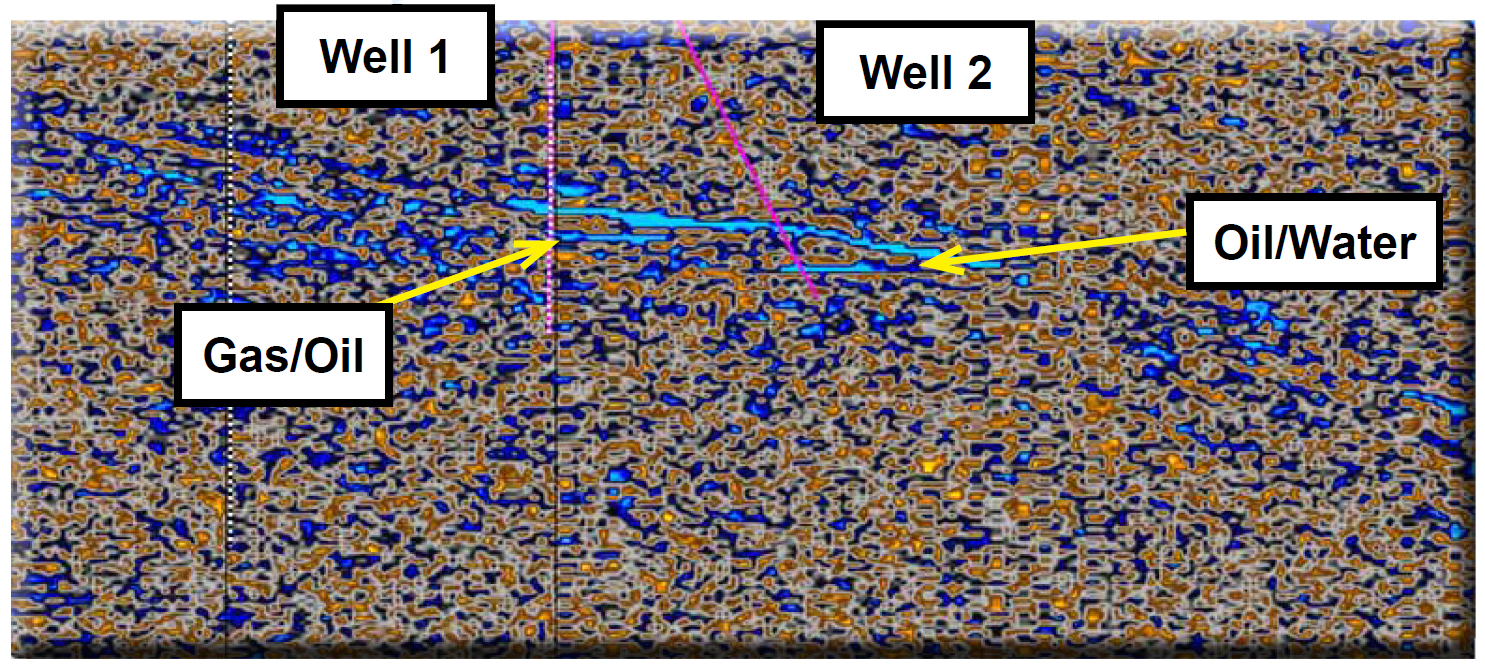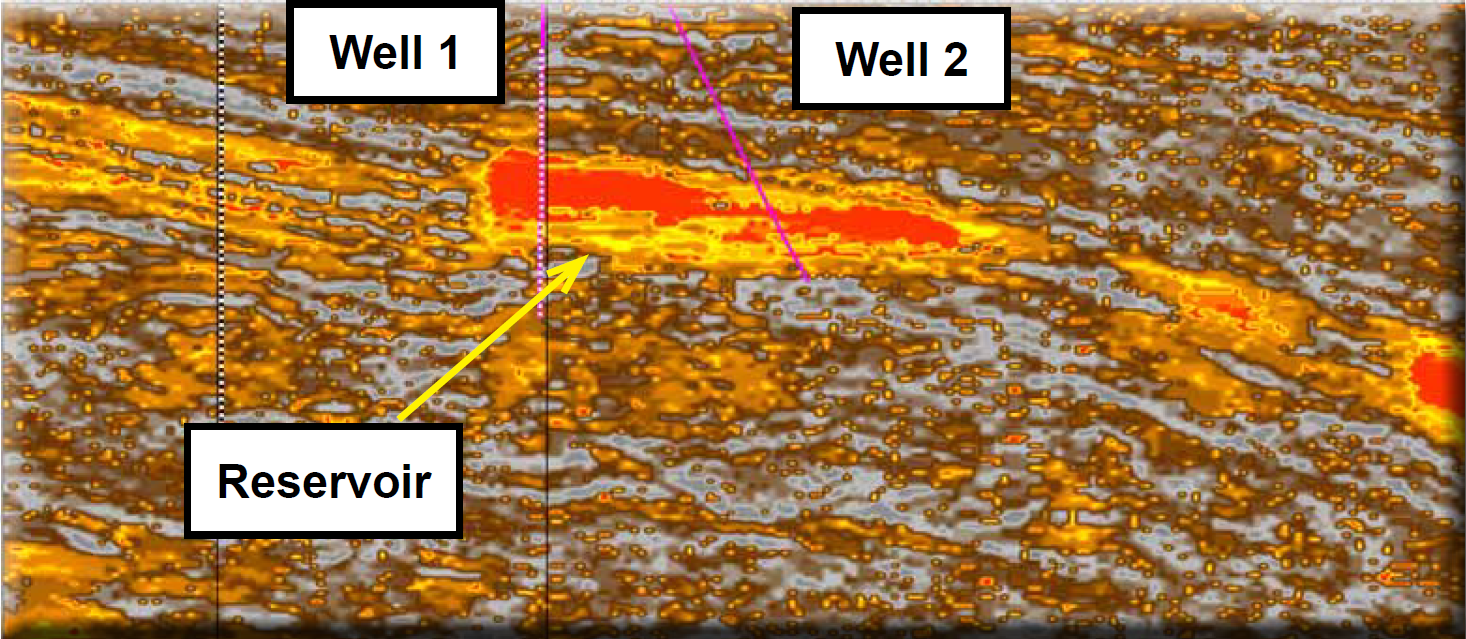Analysis of offshore Gulf of Mexico – Class 3 AVO setting
The case study highlighted below is an offshore oil/gas field in 470 feet of water on the continental shelf of the Gulf of Mexico. The eld has two producing wells that were drilled on the upthrown side of a normal fault and into an amplitude anomaly. The normally-pressured reservoir is approximately 100 feet thick. The hydrocarbon-filled sandstone reservoir has low impedance compared to the encasing shales, indicative of a Class 3 AVO environment.
Applying both traditional interpretation methods and the Self-Organizing Maps (SOM’s) capability within Paradise, Mr. Rocky Roden, a Sr. Geophysical Consultant with Geophysical Insights, conducted an analysis on the 3D volume over this field. A group of seismic attributes were selected that would best expose Direct Hydrocarbon Indicators (DHIs).
Using known conditions, including AVO Class, reservoir characteristics, well logs, and seismic response data, the Rose and Associates DHI Consortium has developed a methodology for quantifying the risk of DHI-related prospects. The Consortium has compiled a database of several hundred wells and has been able to identify the most important DHI Characteristics.
Data quality, bed resolution, or seismic attribute algorithm may or may not allow an interpreter to nd any of the following examples, even if they are physically present in an ideal natural setting. The existence and/or variance in any of these DHI characteristics, as expressed in the data, enable the extent of risk to be better understood, and more so in a group of prospects, to be far better appreciated and quantified. According to the DHI Consortium, some of the most important DHI characteristics are:
-
- Amplitude conformance to downdip structural closure
- Internal consistency of amplitude
- Phase, frequency, or character changes at edge of reservoir
- Flat spots
- Attenuation

Results – Reduced risk through greater insights
The key findings of the study are as follows:
-
- The SOM analyses of the seismic attributes associated with Flat Spots helped define two levels of hydrocarbon contacts in this dataset.
- The SOM analyses on Attributes for Attenuation amplified apparent attenuation features, especially within the reservoir sand.
- The SOM analyses of the seismic attributes named Ten Attributes 10% was especially helpful in defining amplitude conformance to downdip closure, and provided confidence in the internal consistency of the reservoir.
- All three combinations of seismic attributes analyzed by SOM analysis revealed phase and character changes near the edge of the hydrocarbon reservoir.
SOM Analysis proved to complement and enhance the conventional interpretation by providing a second, completely independent method of exposing DHIs. This application of the SOM method increased confidence that insightful DHI characteristics are truly evidenced in the appraisal area. The results of this case study demonstrate that applying the DHI methodology with the SOM analysis engine in Paradise on selected seismic attributes can dramatically reduce uncertainty in the interpretation, thereby decreasing exploration risks in this geological setting.

Seismic data provided courtesy of Petroleum Geo-Services (PGS)




















